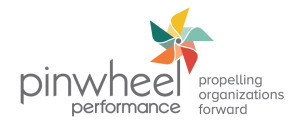Build Collision Courses inside your Company
How to create collisions to spark ideas and build cohesive cultures
Two days before the deadline, I trudged out to my home office after dinner to slog through an on-line traffic school course. I had taken an illegal left turn, got a ticket and was taking the course to avoid a point on my record. For inspiration, I built a fire and logged into Pandora before starting the 11 modules.
As I was going through the various lessons I learned that a white cane can only be legally used by a blind person. For some reason, I found this fact fascinating and thought that this fact might be useful at some point—perhaps in a future novel. One module covered careless driving, which was described as resulting from “taking something for granted.” It was the next sentence grabbed me.
“Some law enforcement personnel prefer to call accidents collisions to remind people that most of these incidents can be actually prevented.”
Immediately Cross Campus, a hub and co-working space for entrepreneurs came to mind. The owners designed and built the space intentionally so that people would have “creative collisions.” I spend a quite a bit of time there because I mentor their members on company culture. The majority of their space is open, with desks positioned as an L of a large room. The rest of the room has clusters of couches, a beverage bar in the middle and a kitchen with communal tables.
♦◊♦
Why are collisions important to organizations? Much has been written about innovation and that spontaneous interaction can result in linking two seemingly different ideas into one that is greater than the individual part. Additionally, collisions are an important part of building relationships and creating a cohesive culture.
In thinking about my culture work, I changed the traffic school statement to:
“Organizations can design collisions so that they are not accidental.”
To clarify, I am not promoting structured meetings with agendas and brainstorms. I am endorsing creating opportunities for people to informally bump into each other and new idea.
♦◊♦
There are three main ways to design collisions and below are examples:
Space Design
- At Edmunds.com, they have curvy couches with coffee tables in proximity to their large coffee bar to encourage casual conversation.
- A client of mine intentionally had one official entry and exit to the building. This way people are more likely to bump into one another. (Of course, fire codes were followed.)
- At Cornerstone on Demand (:58 for office design), there are booths for people to slide into. Who doesn’t covet a booth versus a table at a restaurant? Comfortable couches are scattered throughout the space, and a ping pong table and a large chess game enable people to connect in different ways. Since they have now grown to three floors this becomes even more critical.
- In 1999, Steve Job’s originally designed Pixar headquarters to promote encounters and unplanned collaborations by building a central atrium housing the only campus’s restrooms. In Job’s biography he stated, “If a building doesn’t encourage [collaboration], you’ll lose a lot of innovation and the magic that’s sparked by serendipity. So we designed the building to make people get out of their offices and mingle in the central atrium with people they might not otherwise see. The idea was those people who naturally isolate themselves would be forced to have great conversations, even if that took place while washing their hands.” (Today, they do have more than one restroom.)
Activity Corners
- Next Space, a co-working space in San Francisco has a white board with rotating questions for members. One day was “What accomplishment are you most proud of this year?” I wrote, “Surpassed my personal best time in a two-mile ocean race.” As I was writing another person came over and asked me about my accomplishment. This inspired him to also share and he wrote down, “Attended Burning Man for the first time.” Afterward, he shared some pictures from the event.
- During the holidays, Team One, an Advertising Agency in Los Angeles had a Peace tree made from strings of lights in their lobby. Inside the “tree” was a table with colorful pens, cards and a plaque inviting people to write a message and attach to the tree. Next to the table were two benches facing one another where colleagues might collide.
- Organizations can also take inspiration from museums. Most museums have some type of interactive exhibit. At the Museum of Tolerance, there was a corner where you were asked, “What will you do to foster more tolerance in the world? In your world?” You fill out a card and then post it on the main bulletin.
Pop-Up Exchanges
- I am a big fan of co-working offices because they create spaces for solopreneurs or teams to work independently within the community. To shake things up, I visit different ones from time to time. One of my favorites is kleverdog in Chinatown in Los Angeles.
- One day the community manager announced at 30 minute pop-up at 1:00 pm. People were invited to showcase what they were working on and ask for feedback. Of course, I enjoyed learning things outside of my discipline. Yet, what I noticed afterward was three independent people—a UX and a developer were conferring with the entrepreneur who presented the demo. If kleverdog hadn’t organized that pop-up, these people might not have ever exchanged ideas. And, it is this exchange that builds connections and community within the co-working space.
♦◊♦
A Challenge for your Organization.
Within the next month, design a collision course. It could be re-arranging furniture (or make a current cluster more inviting), installing an activity corner or announcing a pop-up exchange. Or perhaps, there is something else more befitting for your space and/or culture.
If interested, you can read further about a related topic, serendipity.
This was also published on The Good Men Project
